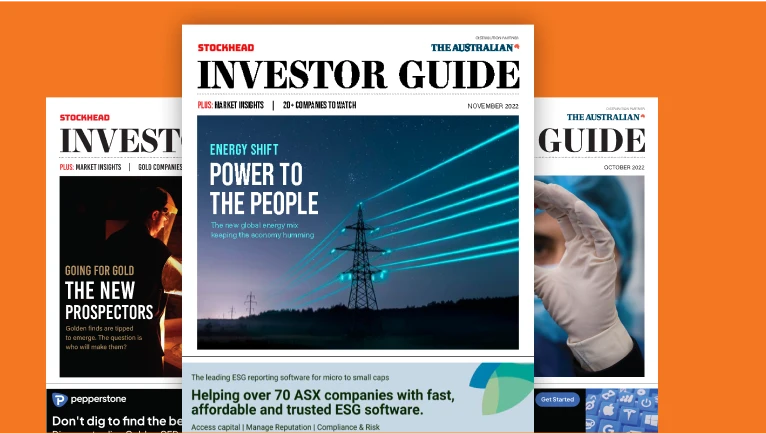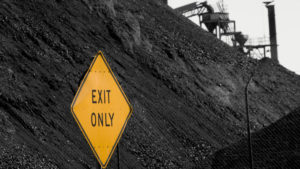Emission Control: Australia is on track to hit its 2030 emissions target… but is it enough?

Pic: Thana Prasongsin / Moment via Getty Images
Australian Government claims success in emissions reductions
Talking about pyrrhic victories, the Morrison Government claims it is on track to meet and beat its 2030 Paris emissions target.
That’s the one that has been regularly criticised by green advocates for not being ambitious enough.
According to the March quarter update, released this week, the economy grew by 1.1% year on year between March 2020 and 2021 but emissions fell by 3.2%.
In the year to March 2021 emissions were 494.2Mt, 5.3% lower or 27.8Mt lower than in 2020.
According to the Feds our greenhouse gas emissions are now 20.8% below 2005 levels, the baseline year for the Paris Agreement.
Australia, having claimed victory by beating its 2020 target by 459Mt, now says it is on track to meet and beat the 2030 target of 26-28% reduction on 2005 levels.
That has an even healthier sheen if the Government deducts export emissions, coming in down 38.5% on 2005 levels.
Emissions from electricity generation continued a long-term decline from the replacement of fossil fuel generation by large scale wind and solar, and rooftop solar, falling by 5.6% or 9.7Mt.
Fugitive emissions fell 8.3%, attributed largely to the belated ramp-up of the Gorgon gas project’s carbon capture and storage facility and transport emissions fell by 13.2% amid lockdowns and long-term work from home arrangements.
However, issues with the Gorgon carbon capture project and restart of the Prelude LNG facility ironically causes a 5.8% in trend terms in the March quarter, along with increased coal production.
“While there is still work to be done, this data shows the Government’s comprehensive suite of policies to meet its emissions reduction commitments, encourage innovation and back new and emerging low emissions technologies are working,” Energy and Emissions Reduction Minister Angus Taylor said.
According to data compiled by the Department of Industry, Science, Energy and Resources, emissions per person were the lowest in 31 years and lower than 1990 levels by 47.8%.
Not fast enough: Climate Council
While the Government was toasting its claimed success of its emissions reduction efforts, green groups were mocking it for its supposed lack of ambition.
The Climate Council says Australia’s 2030 target should be more like 75% than 26-28% down on 2005 levels.
That would imply a 21x increase in the pace of emissions reductions.
“Today’s emissions data release proves the federal government’s climate response is woefully inadequate. They say we’re ‘on track’ to cut emissions by one third of one per cent (0.28%) per year over the next decade. That is a snail’s pace – not the rapid and deep reductions we need to be making this decade,” said Climate Council senior researcher Tim Baxter.
“Addressing the climate crisis is a race, but Australia’s response remains sluggish and woefully inadequate. We should be doing everything we humanly can to respond to a threat as serious and pressing as this.
“Instead, we are making slow and painful progress at a national level that too often comes down to dumb luck, or happenstance.”
The Climate Council says the Government relied too much on the pandemic-led drop in transport demand, calling on it to take up 2030 targets beyond revised targets proposed by the US (50-52%), UK (68%), Canada (40-45%) and Japan (46%).
Delorean rides into the future with maiden financials
ASX green energy stocks
Scroll or swipe to reveal table. Click headings to sort.
| CODE | COMPANY | PRICE | 1 WEEK RETURN % | 1 MONTH RETURN % | 6 MONTH RETURN % | 1 YEAR RETURN % | MARKET CAP |
|---|---|---|---|---|---|---|---|
| AST | AusNet Services Ltd | 1.905 | -4 | 4 | 12 | 5 | $ 7,353,531,813.12 |
| AVL | Aust Vanadium Ltd | 0.0225 | -13 | -6 | 7 | 88 | $ 68,897,335.10 |
| BSX | Blackstone Ltd | 0.465 | 0 | 8 | -9 | -7 | $ 153,286,807.40 |
| DEL | Delorean Corporation | 0.23 | 7 | 12 | $ 38,501,830.20 | ||
| ECT | Env Clean Tech Ltd. | 0.01 | 0 | -17 | 0 | 0 | $ 12,271,255.25 |
| FMG | Fortescue Metals Grp | 20.625 | 2 | -17 | -9 | 17 | $ 62,595,356,782.94 |
| GEV | Global Ene Ven Ltd | 0.074 | 6 | 23 | -26 | 51 | $ 32,459,060.56 |
| GNX | Genex Power Ltd | 0.225 | -2 | -4 | -2 | 19 | $ 240,727,510.13 |
| HXG | Hexagon Energy | 0.073 | -1 | 7 | -23 | 30 | $ 33,005,023.20 |
| HZR | Hazer Group Limited | 1.07 | 0 | 31 | -16 | 164 | $ 154,054,890.12 |
| IFT | Infratil Limited | 7.08 | 0 | 3 | 0 | 58 | $ 5,090,727,581.78 |
| IRD | Iron Road Ltd | 0.205 | 3 | -11 | -28 | 118 | $ 162,891,010.27 |
| LIO | Lion Energy Limited | 0.043 | 5 | 2 | 54 | 187 | $ 12,678,355.24 |
| MEZ | Meridian Energy | 5.05 | 4 | 2 | -6 | 10 | $ 6,272,638,920.00 |
| MPR | Mpower Group Limited | 0.067 | -3 | -7 | -39 | 235 | $ 16,180,836.00 |
| NEW | NEW Energy Solar | 0.805 | -2 | -3 | 6 | -1 | $ 287,721,812.81 |
| PGY | Pilot Energy Ltd | 0.066 | 20 | -20 | -20 | 144 | $ 30,095,193.00 |
| PH2 | Pure Hydrogen Corp | 0.21 | 8 | 20 | -19 | 256 | $ 64,344,551.92 |
| PRL | Province Resources | 0.1475 | 5 | 9 | 74 | 351 | $ 163,800,672.60 |
| PRM | Prominence Energy | 0.011 | -8 | 10 | -15 | 77 | $ 10,412,401.23 |
| QEM | QEM Limited | 0.15 | -6 | -14 | 76 | 50 | $ 16,981,283.23 |
| RFX | Redflow Limited | 0.0585 | -1 | 1 | -10 | 136 | $ 82,420,072.24 |
| SKI | Spark Infrastructure | 2.825 | -1 | 4 | 36 | 28 | $ 4,966,520,612.40 |
| VUL | Vulcan Energy | 13.36 | -5 | 36 | 113 | 1940 | $ 1,476,298,809.48 |
The handful of green energy plays on the ASX reported their financial results in recent weeks.
Biomethane producer Delorean Corporation (ASX:DEL) listed in April this year after a $14m IPO.
Delorean finished the year with $28 million in revenue and $2.9 million in underlying EBITDA, against prospectus forecasts of $30.2m and $3.8m, respectively.
It is building two bioenergy developments in South Australia and New Zealand worth around $20 million, and reached an FID on its own build own operate $13.8 million DEVO project in Victoria, where construction will start this month with a completion date of FY2023.
Meanwhile, large-scale solar generator New Energy Solar (ASX:NEW) announced a $35.1 million loss after tax for the half year based on costs associated with asset sales and lower valuations.
It made revenue from its underlying operations of US$33.8 million and EBITDA of US$24.9 million with US$15.3 million attributable to the company.
New Energy Solar sold its Australian Manildra and Beryl solar farms to Banpu Energy earlier this year, with incoming CEO Liam Thomas saying the sales process was heavily affected by curtailments from the AEMO due to congestion on the grid.
He said it was not an issue which would fix itself soon. The quality of transmission infrastructure is currently seen as one of the biggest issues for renewables investors in Australia.
Related Topics

UNLOCK INSIGHTS
Discover the untold stories of emerging ASX stocks.
Daily news and expert analysis, it's free to subscribe.
By proceeding, you confirm you understand that we handle personal information in accordance with our Privacy Policy.








